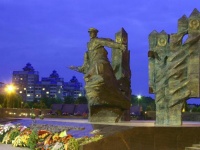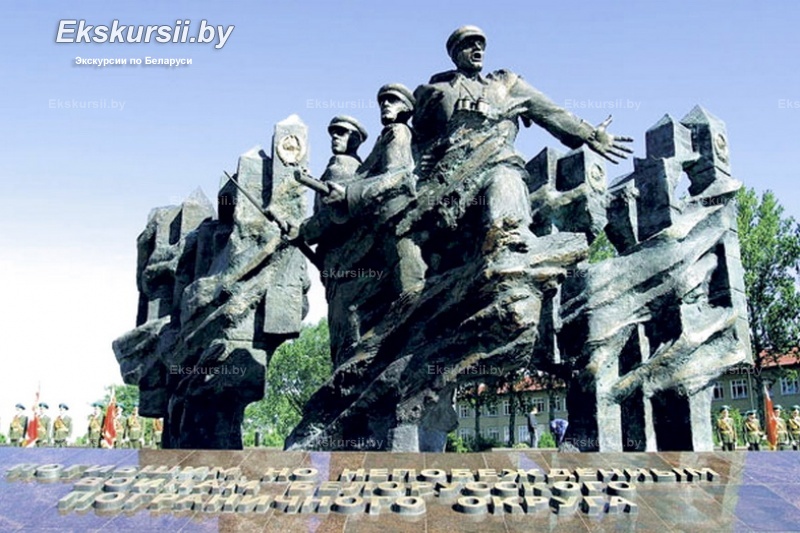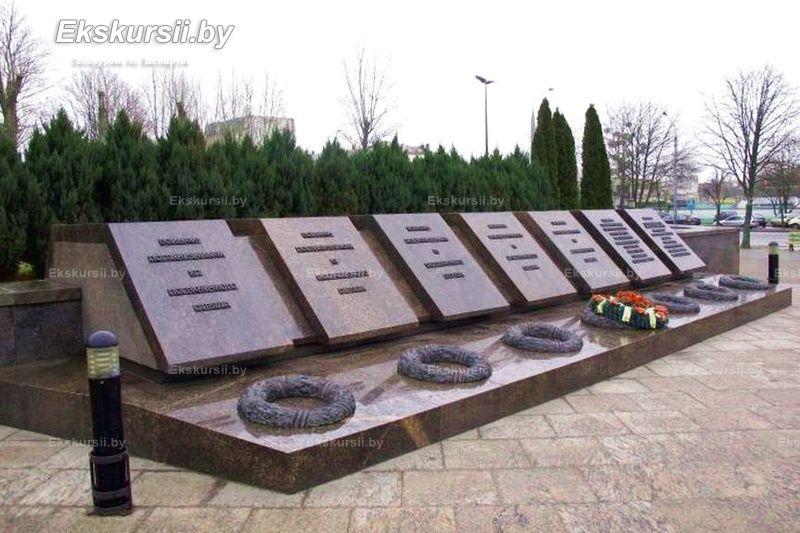- Home
- →
- Attractions
- →
- Soldiers Memorial Ensemble Border Guards
Soldiers Memorial Ensemble Border Guards
The Memorial Complex to Border Guards in Grodno is one of the most significant monuments dedicated to the heroic chapters of Belarusian history during the Great Patriotic War. It was erected in honor of the border guards of the Belarusian Border District, who were the first to face the attack of Nazi troops on June 22, 1941, and demonstrated courage, resilience, and loyalty to their oath. The complex serves as a site of remembrance, patriotic education, and historical reflection. The memorial is located in Grodno — a city with deep military traditions and a rich historical past. Thanks to its convenient transport accessibility, it has become one of the key stops on the routes of excursions across Belarus and is especially popular as part of excursions from Minsk.
This site is equally significant for both local residents and visitors to the city. It symbolizes the strength of spirit and unity of the peoples of the former USSR in the fight for freedom and independence. Tourists who visit note the powerful emotional impact of the memorial: the atmosphere of solemnity, silence, and inner tension allows one to truly feel the tragedy and heroism of the war’s early days.
History of the Memorial
The creation of the memorial was timed to an important date — June 22, 2004, the 63rd anniversary of the beginning of the Great Patriotic War. The choice of date was deliberate: it was on this day in 1941 that the heroic and tragic history of defending the western borders of the Soviet Union began. The first to engage in combat were the border guards — often poorly armed, but with extraordinary determination. It is to them that this memorial complex is dedicated.
The project was initiated by the State Border Committee of the Republic of Belarus. The project leader was Lieutenant General Alexander Pavlovsky, then chairman of the State Committee. The sculptural part of the memorial was created by Grigory Buralkin, a renowned Belarusian sculptor whose works adorn many public spaces in the country. The architectural design was developed by Sergey Fedchenko.
Construction was not funded from the state budget but through voluntary donations. Contributions came from active-duty military personnel and border guard veterans from Belarus, Russia, Kazakhstan, Kyrgyzstan, Moldova, as well as from private individuals and organizations. This highlights the international nature of the memory of the border guards' heroism and the shared historical responsibility. A bronze plaque installed on the rear side of the memorial complex lists the countries and contributors involved in its creation.
Architecture of the Memorial
The memorial complex is designed in a monumental style, rich in symbolism and imagery that evokes deep associations with war, heroism, and unity. At its center stands a bronze sculptural group depicting border guards at the moment of combat. The soldiers are shown in motion — passing through flames, gripping their weapons, with stern and focused expressions. These are not just fighters but true defenders, standing firm for their homeland.
Particular attention is drawn to the fifteen border posts behind the soldiers. Each represents one of the fifteen republics of the former Soviet Union, emphasizing that the defense of the borders in the early hours of the war was carried out by representatives of all Soviet nations. This architectural solution makes the composition especially expressive and emotionally powerful.
With its granite wall, bronze figures, austere forms, and deep symbolism, the memorial conveys a sense of determination and tragedy. It stands out not only for its artistic merit but also for its strong ideological message: a monument to duty, unity, and memory.
Excursions to the Memorial Complex
The memorial in Grodno is included in many excursions across Belarus, particularly those focused on military and patriotic themes. It is recommended for both individual travelers and organized groups. For those interested in World War II history, border service, and monuments of heroism, this site will be a true discovery.
The memorial is often visited as part of a one-day excursion from Minsk to Grodno, which may also include tours of the Old Town, Kalozha Church, castles, and this memorial. During the excursion, visitors receive a detailed narrative from a guide, learn about the history of the complex, its architectural features, the stories of individual soldiers, and the international support behind the project.
This excursion is especially suitable for school groups, students, military personnel, members of patriotic clubs, as well as corporate clients and families with children. To join the tour, it is enough to book an excursion with a visit to the memorial complex on the website Ekskursii.by.



